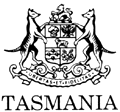Marine and Safety (Radio) Regulations 2022
I, the Governor in and over the State of Tasmania and its Dependencies in the Commonwealth of Australia, acting with the advice of the Executive Council, make the following regulations under the Marine and Safety Authority Act 1997 .
24 October 2022B. BAKER
Governor
By Her Excellency's Command,
MICHAEL DARREL JOSEPH FERGUSON
Minister for Infrastructure and Transport
These regulations may be cited as the Marine and Safety (Radio) Regulations 2022 .
These regulations take effect on 20 December 2022.
In these regulations –ACMA means the Australian Communications and Media Authority established under the Australian Communications and Media Authority Act 2005 of the Commonwealth;Act means the Marine and Safety Authority Act 1997 ;Commonwealth Bureau of Meteorology means the Bureau of that name established under the Meteorology Act 1955 of the Commonwealth;limited coast marine rescue station means a land station, within the meaning of the Radiocommunications (Interpretation) Determination 2015 of the Commonwealth, established for the purpose of communication with vessels at sea, that is licensed as a limited coast marine rescue station with the ACMA;MAST means the Authority;radio telephone installation means the radiotelephone equipment installed at a limited coast marine rescue station including, if applicable –(a) the transmitter; and(b) the receiver, whether separate from, or combined with, the transmitter; and(c) the radiating system; and(d) the source of electrical energy.
4. MAST- approved marine radio stations
(1) MAST may, by notice published in the Gazette, declare a limited coast marine rescue station to be a MAST-approved marine radio station for the purpose of ensuring the safe operation of vessels in the waters over which MAST has jurisdiction.(2) Before making a declaration under subregulation (1) , MAST must be satisfied that the limited coast marine rescue station continuously listens on distress frequencies appropriate to its radiotelephone installation.(3) Before making a declaration under subregulation (1) , MAST may also take into consideration whether the limited coast marine rescue station –(a) regularly broadcasts weather forecasts issued by the Commonwealth Bureau of Meteorology; and(b) broadcasts, on receipt, weather and navigational warnings issued by official meteorological or search and rescue agencies; and(c) provides a service for mariners to lodge position reports and voyage reports; and(d) has in place auditable contingency arrangements that ensure a limited service can be provided under abnormal operating conditions; and(e) is operated in accordance with the Radio Regulations (being the regulations administered by the International Telecommunications Union, as from time to time amended); and(f) has in place auditable processes that ensure the station operates efficiently; and(g) has in place a record-keeping system that MAST considers to be satisfactory; and(h) has in place a radiotelephone installation that complies with the requirements of Schedule 1 ; and(i) does not replicate services provided by any other MAST-approved marine radio station.(4) A MAST-approved marine radio station is to be operated by an authorised person appointed under section 44 of the Act for the purposes of this regulation.(5) An authorised person referred to in subregulation (4) is to listen, or assist in listening, to distress frequencies appropriate to the radiotelephone installation of the MAST-approved marine radio station.
The legislation specified in Schedule 2 is rescinded.
SCHEDULE 1 - Requirements for Radiotelephone Installations
PART 1 - Interpretation
1. InterpretationIn this Schedule –FM means frequency modulated;VHF means very high frequency.
PART 2 - VHF FM Installations
1. SpecificationsThe radiotelephone installation complies with the Radiocommunications (VHF Radiotelephone Equipment – Maritime Mobile Service) Standard 2018 made by the ACMA, as from time to time amended.
2. Transmitter and receiverThe radiotelephone installation is capable of effectively transmitting and receiving on –(a) the following VHF FM maritime mobile band frequencies:(i) the international distress and calling frequency Channel 16 (156.8 MHz);(ii) the supplementary safety frequency Channel 67 (156.375 MHz); and(b) any other frequency appropriate to the service provided by the limited coast marine rescue station.
3. Main source of electrical energyThe limited coast marine rescue station has a main source of electrical energy capable of operating the station’s VHF radiotelephone installation.
4. Reserve source of electrical energyThe limited coast marine rescue station has a reserve source of electrical energy that has the capacity to supply, and is maintained so as to be able to supply, for a continuous period of at least 6 hours, a total current equal to the sum of –(a) 50% of the current required to operate the station’s VHF transmitter for the transmission of speech; and(b) the current required to operate the station’s VHF receiver.
5. Antennas(1) Each antenna of the radiating system of the radiotelephone installation is of a type and dimension, and is erected and insulated, to ensure efficient radiation.(2) Each antenna of the radiotelephone installation is so located and constructed that the antenna –(a) is protected from mechanical damage and the adverse effects of water; and(b) does not pose a danger to any person through risk of accidental contact or through excessive exposure to electromagnetic radiation.
SCHEDULE 2 - Legislation rescinded
Marine and Safety (Radio) Regulations 2012 (No. 133 of 2012) |
Displayed and numbered in accordance with the Rules Publication Act 1953.
Notified in the Gazette on 2 November 2022
These regulations are administered in the Department of State Growth.

